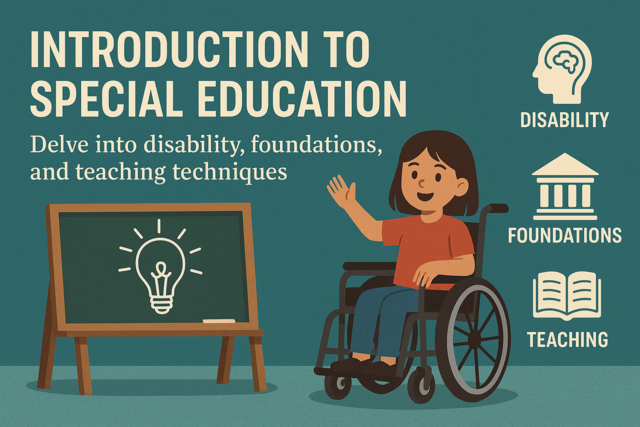After a day of substitute teaching, the final bell rings, and students are dismissed. If it is a "typical" day of working with students all day long, it can be tiring for a substitute teacher at this point. Before you can go home, however, there are few things you need to do as part of your job, as common courtesy, but also to impress the regular the regular teacher and the school with your abilities as an effective and reliable substitute teacher. Even if you feel like the day was wild, you can still end your day firmly in control.
Classroom Environment
Many regular teachers work hard at presenting, organizing, and maintaining a classroom environment that is conducive to learning, is organized for the type of work done in the room, and is pleasant to be in the class. Moreover, many of the supplies and materials in the classroom have been purchased with the teacher's own money. It shows that you respect the teacher and school when you leave the classroom in the condition you found it in the morning, or better. While some substitute teachers will claim that this is "not their job," your doing so will set you apart as a substitute teacher who cares and goes the extra mile.
Tidying up and organizing the classroom does not take more than a few minutes unless there is a real mess. I hope that this will not be the case with successful classroom management techniques! You can erase and clean the chalkboard or whiteboard (being careful not to erase any notes that the regular teacher has left for the students). Straighten the desks into the configuration that they belong. Pick up and throw out any errant trash on the floor or anywhere else in the room. Make sure that all supplies used are returned to where they belong, neat and organized. Return any books and materials that you used from the teacher to their rightful places. It is just common sense to put the room back to the way it was so that when the regular teacher returns, he or she can pick right up and continue.
Reports
The other main task you should accomplish after the school day is over and the room is tidied is to write your report of the day. Some schools require a written report be left with the office about the events of the day; others do not. Usually, if a school requires a report to be left with the office, they will supply you with a form to complete. Questions that may be asked include if a lesson plan and materials were left for your use, how successful the lesson was, how students behaved, and any other circumstances that should be reported. It is important to be honest on the report; in most cases, the reports are not used to track your performance. Rather, they are used in case something happened that needs to be noted or if they are tracking the behavior and actions of particular students.
Regardless of whether a school asks you to leave a report in the office, it is always a good idea to leave a written report just for the regular teacher. Teachers appreciate knowing what went well and what did not, what was accomplished and what was not, who was helpful and who was disruptive. It is helpful to know how far you got in the lesson so that the teacher can prepare accordingly. Teachers want to know how well particular students performed because there may be cases in which they are working with certain students on academic or behavioral issues, and this information will be helpful in their efforts. When writing a report for the teacher, it does not need to be long; a simple paragraph or two per class or lesson is all that is needed.
You should also know that honest reports are far more appreciated over general, "Everything went well," reports. When working with students, rarely do things ever go exactly as planned. Regular classroom teachers know this. Their lessons are rarely, if ever, perfect because of behavioral issues, interruptions, or simply because the lesson just did not work out right. If your report is vague and sugar coated, it leaves the impression that you have something to hide or that you are not competent enough to recognize what works and what does not. Remember, if you are having challenges with a particular student, chances are the regular teacher is as well. Plus, sometimes regular teachers have agreements with their classes about a rewards system for good reports from substitute teachers. If you say everything went well when it really did not, the class may then be rewarded for their poor behavior with you.
Checking Out
Once the room is tidied and the report written, your day is just about done. After you make sure that the room is fine, your reports are done, you have taken care of any end-of-day tasks the regular teacher asked you to do, and you have all your personal supplies and effects that you came in with, you can turn out the lights and lock the door. If you have made any contact with teachers near you or they helped you throughout the day, be sure to stop by their rooms and thank them for their help. Again, any positive impressions you can leave will serve you better in the end, and appreciating the help of someone else is important.
Unless the school has a unique procedure, you will end your day in the main office. Some schools require that substitutes sign out there, but you will at least need to return the keys, folders, attendance lists, and any other materials that they gave you in the morning. Thank the secretary for her or his help, and mention that you enjoyed the day and that you look forward to your next assignment there (if it is the truth). Again, these go a long way in leaving a good impression and helping you get called back for another day!
The Future of Substitute Teaching
Despite national regulations, such as No Child Left Behind (NCLB), public education in the United States is largely left in the hands of state and local agencies, like departments of education and school districts. Because of this decentralized structure, the structure and requirements of public education, including its substitute teachers, vary greatly from one area to the next.
In some school districts, substitute teachers are in great demand. In other places, the supply exceeds the demand. Many factors influence the disparity in the availability of substitute teachers, but in general, the availability of both regular and substitute teaching positions is expected to increase in the next few years.
Demand for Regular Teachers
The need for regular classroom teachers and substitute teachers sometimes goes hand in hand. The U.S. Bureau for Labor Statistics estimates that between 2008 and 2018, the need for teachers will increase by 13-percent. While enrollment in general is not expected to increase as much as it has in the past, there are a greater number of retirements expected by 2018.
Additionally, the demand for teachers is also expected to vary by region of the country. Geographical areas where there is faster population growth, such as the U.S. South and West, will see the greatest growth in school enrollment, while the Midwest should remain steady, and the Northeast will overall see a decline.
Additionally, the settings of schools also greatly influence the demand for teachers in those schools. Suburban schools, with generally satisfactory salaries, well funded programs, and parental support, tend to have lower demands for teachers. Urban schools, with high turnover rates, funding problems, and behavior challenges, have higher demands as do rural schools, with their lower salaries and geographical isolation.
Future trends in the needs of regular classroom teachers can affect the need for substitute teachers. Generally, where there are larger numbers of regular teachers, there is a greater need for substitute teachers.
What has affected teacher supply and demand in recent years has been the challenging economy. As funding for public education has been cut, regular teaching positions have also been eliminated. In some circumstances, regular classroom teachers have been laid off, and some of those teachers have been added to the pool of available substitutes.In other cases, vacant positions have been eliminated. Both situations, however, mean that there are greater numbers of potential teachers available for positions, whether furloughed teachers or recent graduates, and these individuals may be turning to substitute teaching for income.
Furthermore, as more currently practicing teachers retire, some of them will turn to substitute teaching as a means of part time employment during retirement. Though this has always been the case with teachers, as the number of retirees grows, so will the number of available substitute teachers.
Both seekers of employment as regular teachers and substitute teachers will find greater opportunities in urban and rural areas over suburban, and they will have more prospects in the South and West than in other areas of the country. Substitute teachers who have greater mobility and multiple licensures (where required) will find the greatest opportunities.
Demand for Substitute Teachers
While the demand for regular classroom teachers can affect the demand for substitute teachers in a general sense, there are also particular issues that affect substitute teachers exclusively, and the demand for substitutes can sometimes be high in areas with little demand for regular teachers and vice versa.
Places where the demand for substitute teachers is high often have one of a few reasons to blame. One factor is pay. If the pay level is inadequate for a substitute teacher, the best schools with the best students and supportive school personnel will not make much of a difference. The National Education Association points out that in places where substitute pay is low, there are greater substitute teaching shortages, and attempts at building regular substitute teacher pools often fail. However, low pay is not the only reason for lack of qualified substitutes.
Another factor that substitute teachers cite for not wanting to work in some districts is a lack of respect from school personnel and students. If lack of respect is systemic in the school district, there are often larger problems that need to be addressed before the conditions for substitutes will improve.
A further issue in some areas where there is greater substitute teacher demand is lack of effective training or orientation to the school, district, and expectations in the classroom. This contributes to some substitute teachers not wanting to accept jobs in those districts because they feel unsupported or ill prepared to meet the challenges in the classrooms of those particular districts. However, in general, school districts and agencies are improving their substitute teacher training and orientation programs, and this can help in substitute teacher retention.
If substitute teachers are desperately needed in one particular school or district while all the surrounding schools are operating satisfactorily, that may be a sign that the school or district in question has particular challenges in pay, respect, or training that fewer substitute teachers are willing to accept.
Overall Outlook


























